Share this
We are very proud to publish this conversation, with one of the most eccentric, audacious and mind-blowing artists of our time. Dear readers… meet Bryan Lewis Saunders (BLS). If you google BLS (we strongly suggest that you do!) you will find lots of intersting information about him. His art production is so vast and diverse that it is impossible to catalogue. Forget all about labeling him into itemized painting and drawing techniques, genres and styles. He is artistically everywhere… and goes all the way to the other side of everywhere. BLS’s production is a wild and at times dangerous journey, through body experiments, extreme sensations and unusual mental landscapes.
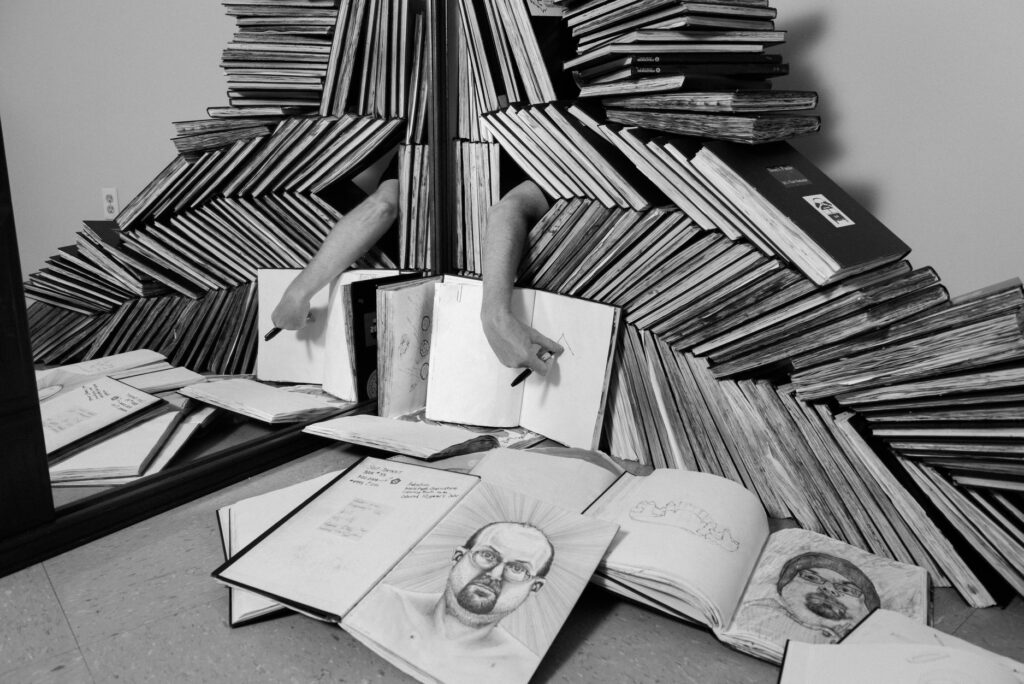
A considerable number of artists, if not most, will recognize that the sexual drive and its sensations are a catalyst of artistic inspiration and creation. But you are probably the one that has gone the farthest with experimenting. Did you at any point of the journey experience that the sex energy arousing you was not coming only from your body – but also from some external, universal source?
No, not at all because every single thing we experience comes from our nervous systems which are inside of us. No matter how extreme an experience is, it still comes from our brain. Even when euphoria has turned me into a floating Tesla coil, and I’m gliding down the street zapping everything around me, I still feel that my experience is coming from within me and I want to explode myself out of my skin. There’s no inner need to attribute these experiences to a “union with the divine” or some other external universal energy force or anything like that, it always comes from inside I believe. What’s universal to me is our bodies, our brains, our nervous systems and sensory systems and the basic elements of experience; things like focus, arousal, valence and stress. It’s those basic natural inner forces that are responsible for how we evaluate our condition and the degree to which we’re attached to our environment as well as what connects all of us together as human beings. When I see words like external, universal, and energy close together like that it kind of turns me off, but I can understand why people might see it that way because most of the time when we experience sudden changes to our condition it’s because environmental/external influences are acting upon us so then when we experience a shocking or profound change internally, we’ll automatically begin looking outside of ourselves for answers but they can also come from inside. My most extreme experiences with euphoria for example, the most ultimate of my ecstatic intoxication events, have all had two things in common. They each involved some form of release. They all occurred as I was being liberated or freed… freed from prison, freed from state mental hospitals, and after freeing myself of psychological traumas during live performances. They also involved external changes, drastic sudden changes to my environment, but even then I always believed that these feelings of euphoric grandeur were being generated inside of me by my situation and not externally. My supernatural feelings were still natural to me no matter how extraordinary.
Is there a kind of weakness or inferiority complex endemic to our species, so we tend to see these overwhelming “grandeur and Tesla coil sensations” as coming from something more superior than ourselves?
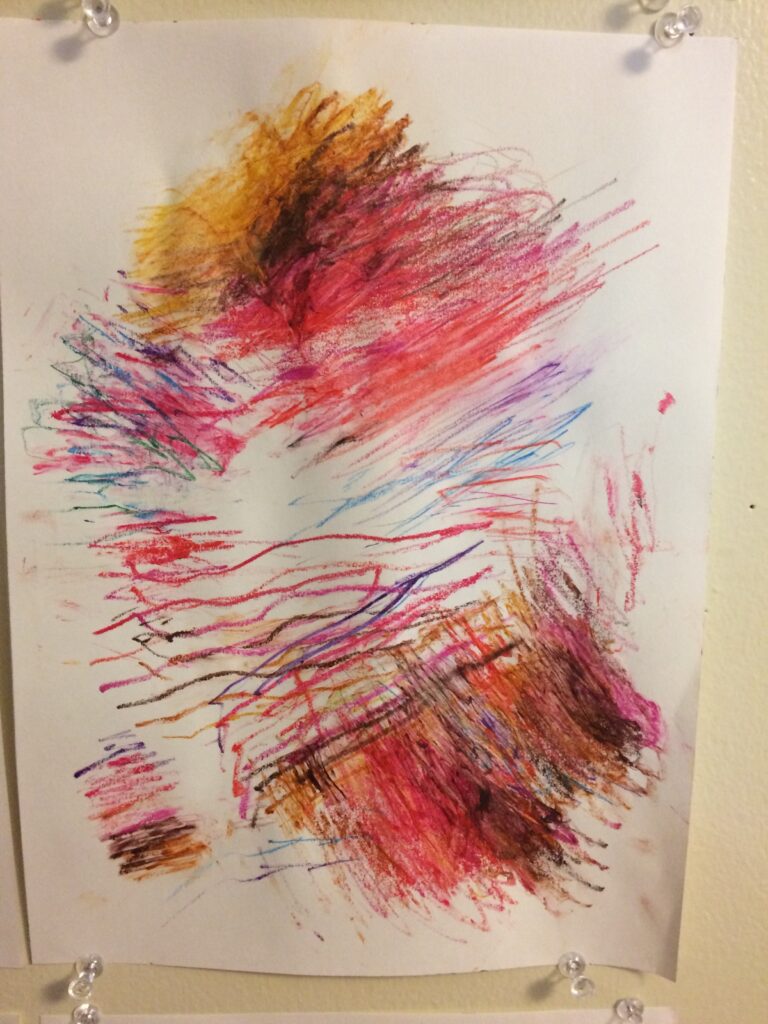
I guess you could call it a weakness but I just think that those kinds of beliefs are due to a lack of basic knowledge and understanding about our bodies and the relationships we have between our bodies and the environment.
Maybe we are not capable or not trained enough to deal with these forces from our own psychobiological depths?
Totally. I mean look at it this way… steering is hard when you can’t see the car you’re in, and you don’t know how the car works, and you only feel the road and parts of the car by colliding with objects all around it. It seems like that’s how a lot of people are going through life and it’s no wonder at all that they’re susceptible to believing things outside of the laws of nature.
Ultimately… is it therefore that we need a “father in the sky” to look out for us, to guide and protect us individually and socially?
That’s part of it I’m sure.
Following the logic that… what bonds us all together are “basic natural inner forces” shared by all of us. Then we could say that, what’s valid for you, Bryan Saunders, may also be (or should be) valid for everybody or -at least- some people. Euphoria, is it then a road to a momentary freedom from anything that may be constraining or oppressing you?
Of course these forces are valid for everyone. They make up who, what, why and how we are, what we are and why we do what we do. Every single one of us have bodies and nervous systems, though they may vary from person to person, they all connect us to our environments and each other and we all have the same basic elements of experience too and all of us use them to identify, evaluate and make judgments about our condition and situations. What I find interesting is that almost every bit of that happens unconsciously so it has taken an incalculable amount of effort to uncover and discover these processes and there is still so much more to learn.
My epic experiences with euphoria weren’t a road towards freedom at all though. They were the results or effects I experienced after being freed already. It’s what I experienced internally after months of physical confinement with limited sensory stimulation accompanied by incessant fear and negative stress and negative arousal followed by a sudden change to my environment with sensory overload and no fear plus positive valence and heightened arousal…

Why don’t we institutionalize euphoria to something we should attain at least once a day?
I think a lot of people try but over time it becomes physically harder and harder to sustain. Continuous exercise will bring about euphoria, but continuous exercise will also bring about inflammation, injuries, muscle blow out and fatigue which eventually force you to discontinue exercise. Drugs can bring about euphoria but then we develop a tolerance. And sex can bring about euphoria but there are physical limitations to that too. Euphoria is intense. It is the ultimate level of arousal, with the utmost positive valence and the best maximum stress you can get, all in one state or condition simultaneously. Homeostasis on the other hand, the fundamental principle of our physiology, is all about stability between the interdependent bodily elements and processes. Euphoria, by its very nature, is a departure from homeostasis because the intensity is destabilizing.
Is there something in our culture or existential paradigm, at least here in our so called western world, that prevents us from that?
Yeah: smart phones, social media, streaming services, free pornography, bad food and the news… But those things might actually be conducive to euphoria though if only you were to suddenly deprive yourself of all of them at once and find yourself empowered and alone in a totally different environment. Somewhere you’ve never been before with no expectations and memories to guide your perceptions as you go. That is, as long as you can still feel comfortable, safe and secure there. That would probably get you pretty euphoric but it won’t last of course.
Or is it our neurobiological machinery that is not prepared or designed for that – and euphoric states have a price (we have to pay)?
I’ve never felt like there was a physical price to be paid after sexual, environmental, or liberation euphoric events. After a continuous exercise event, or even a euphoric dancing event there can be soreness and fatigue. And with many intoxicants, except DMT, there are hangovers and the likes. For the other kinds of euphoria it’s more like they require an entrance fee to me. It’s what the condition of my body is in and where it is located prior to the euphoric event that enables it and makes it possible or more likely to be experienced.
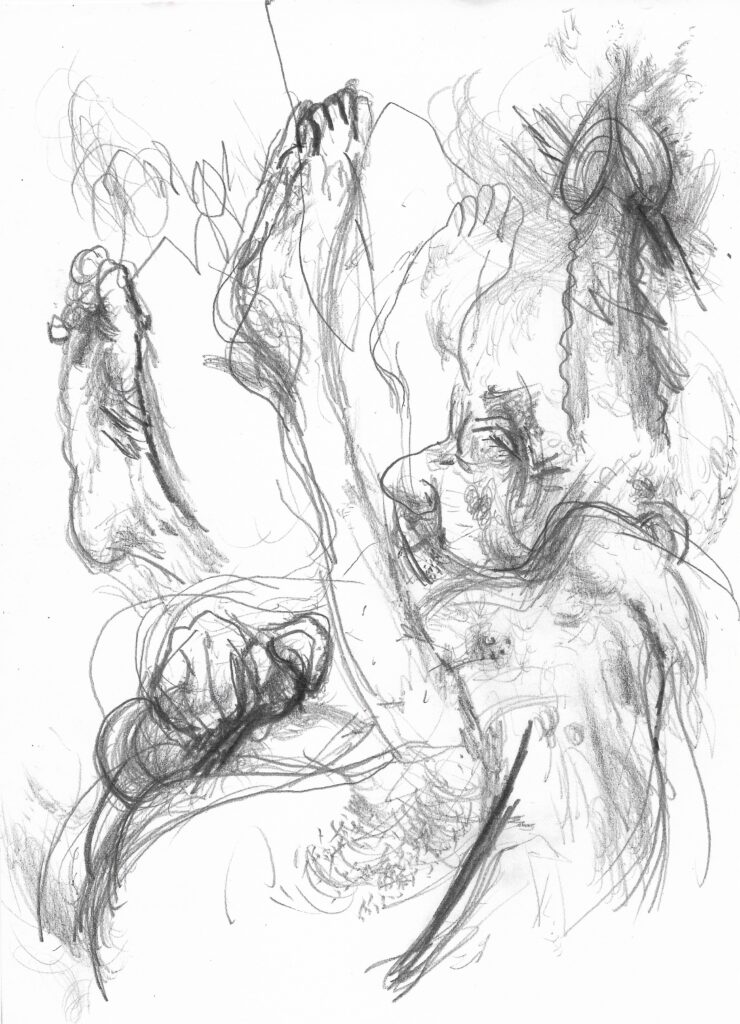
Did you enter the “intercourse with the soul” you mention in the book?
No, but it was definitely something to strive for. Sometimes I set the bar magically high for myself on purpose. Unattainable goals make me feel like I might strive harder.
“Soul” for some people is a concept strongly related to the “divine” – the external kind of thing that turns you off. But also atheists speak about the “soul”, more or less as the most essential of the being. Would you like to share your own personal definition of this tricky concept: “Soul”?
I try not to waste my time thinking about words like that too much but I guess I would define the soul as, “a label for the overall intensity of the social valuation of one’s life”. In my youth I tried being a grave robber and at that time I believed I had no soul at all. When I would look in a mirror my blue eyes appeared empty, black and dead inside of me and it was like that for quite a while. I would often say to myself, “My soul is dead. My soul is dead. My soul is dead.” Then when I began doing daily-self-portraiture one of the goals I had for the project was I wanted to use them as a way to “grow a soul” and “grow emotions” and generate empathy but I’ve never really believed that souls even existed. There is a bit of uncritical thinking and dissonance in me concerning them. Now most people would think I probably did it and probably do have a soul now. Most people that know me, post life of crime, would probably say that I have a soul and it is evidenced in my art and behavior but I personally am not so sure. So I guess it is only for others to evaluate and decide. I myself have very weak feelings of knowing anything at all about souls.
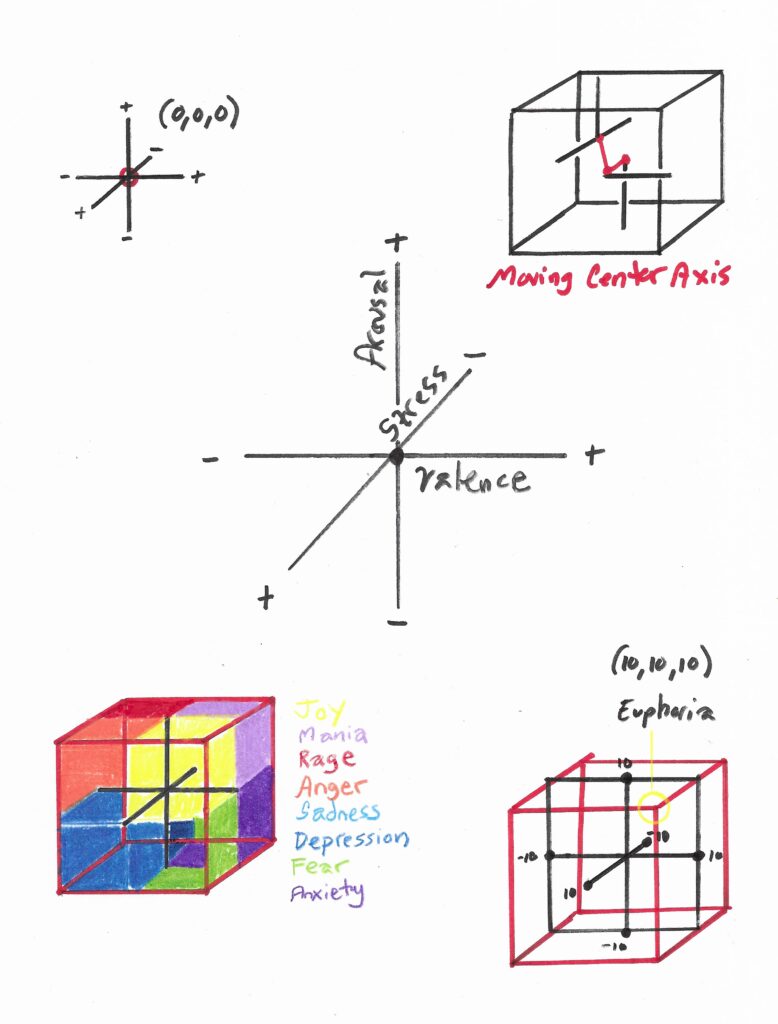
Now…let’s say, we have these three elements on a table
1) Art (understood as the concrete product of art production)
2) Sex (understood as the base or substrate of sexual euphoria)
3) Soul (understood in whatever way, you may do).
How would you arrange them? (a graphic representation will be most welcome!)
I wouldn’t arrange those words at all. I would exchange those words with Arousal, Valence, and Stress. Along with Focus, they are the axes that are present in any evaluation of our always changing condition. See picture above and link HERE.
In the first sentences of Sexual Arousal you declare (hope I got it right) one of your goals is to directly confront the human condition through extreme events and an intensification of sensations. No doubt, that’s what you tell us about in Sexual Arousal. Now, after your tour de force and rephrasing your own question in the book: Did your nervous system over time become more sensitive or more numb?
Both actually. I experienced both. I didn’t realize it at the time, but there’s always an oscillation between the two. I’ll become increasingly sensitive during the experiments and then totally numb once they’re done and I think that’s why I change drawing experiments so often and don’t stick with any of them for too long. Neuroscientists say that the dopamine reward system in the brain is most predominant during the investigative/discovery process. Like the old saying goes, “the chase is better than the catch” and once a new pattern or a new process is formed and I start to make assessments and judgments about them I’ll lose all of those wonderful rewarding feelings and start looking for something else.
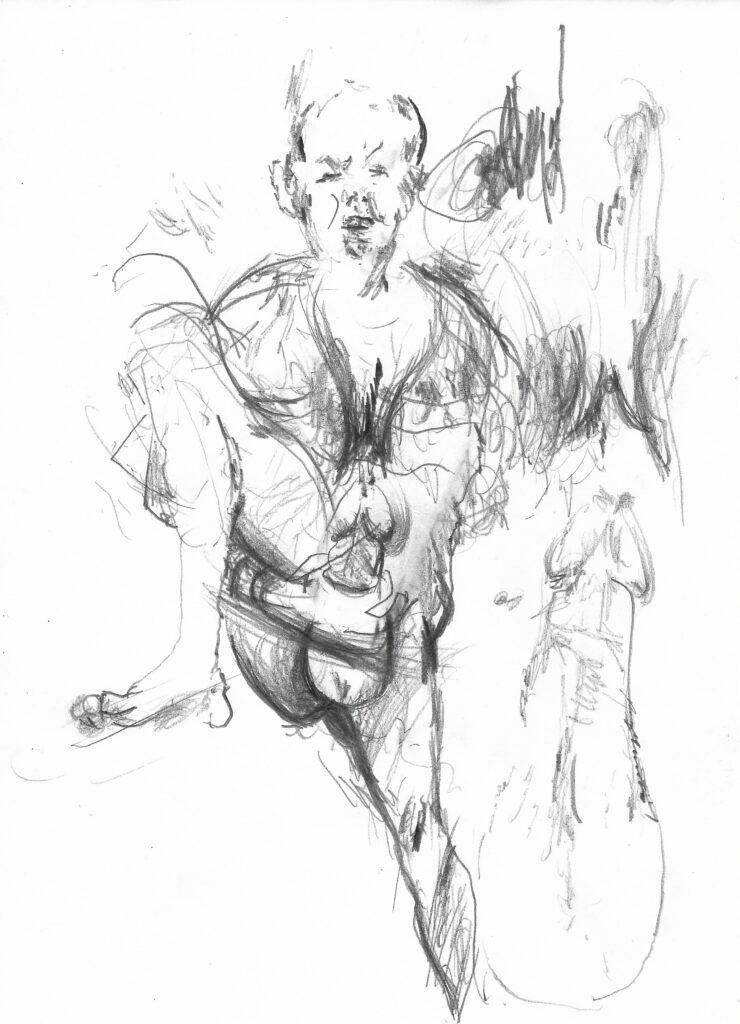
“The chase is better than the catch” – Yes, I guess we all have experienced that… but in order to continue chasing most of us need to catch something once in a while. Evolution was/is possible because there is a catch once in a while. What could be the ultimative goal?
Chase, catch, rest, chase, catch, rest, chase, catch, rest… or suffer a long and boring death. Lol.
Developing a recognizable style, a “voice”, is something many relevant artists have worked hard (or very hard) to achieve. IMHO you have the capability to develop any style you could want to. Has your enormous variety of styles an explanation – or partial explanation?
Well originally I was anti-style because I was so anti-marketing, anti-branding, anti-fashion, etc. but I also felt like by the 1990s styles were cheap. I felt like if everyone can have one then none of them are truly valuable outside of being an inspiration to others which I must admit is very important too. I also felt like because meaning could be generated from styles as was the case with all of the genres and -isms, then that would mean that everyone’s individual style could also come to represent something as well further scattering and cheapening the magnitude of their meanings. I was also psychotic and suffering from schizotypal personality disorder and other mental problems at this time but I thought there must be something deeper at work beneath the styles. What lies under the mark making? What is beyond them that keeps us human beings connected to each other? What are the causes and influences that are not being investigated? What are the reasons for artists’ having an individual style? And I would think about things like repetition which leads to mutation and then to novelty. Or how errors and accidents can become useful in novelty creation. And the different ways of breaking the brain which can make those fundamental errors happen at will. And how we can combine multiple preexisting patterns to form a unique composite pattern or process. All of these types of questions and answers plus a whole lot of pain were what eventually led me deeper into the body and nervous system and sensory systems and to the identification of the basic elements of experience and the awareness of our changing perspectives and our basic action-selection processes for making marks. And our physiology too. Once we know what these underlying processes are then we can change them and direct them and turn them into tools and make much larger and more impactful advancements I believe.
Any kind of principles or personal tendency or ideology as to why you haven’t embraced a definitive Saunders´ style?
In the daily-self-portraits I use a lot of different processes depending on what I am experiencing. I use all three different brain networks; central executive network, default mode network, and the salient network and I’ll use different combinations and sequences of them depending on what I’m experiencing too. As I stay open to experiences I’m not limited to just one network or process or combination of them. I also use drawing as lots of different kinds of purposeful tools; therapy, stimulant, game, memory aid, etc. I have a lot of different motivations too. I use 8 I think different types of perception not all at once but depending on what I’m experiencing. I spend a different amount of time on each image depending on how long the experience is or how long the different kinds of sensory stimulation lasts. There are several different components of my focus that are easily manipulated. I don’t limit myself to a single literary perspective (i.e. 1st person, 2nd person, third person, omniscient narrator). Sometimes I use my memory and the past in the image. Sometimes I make predictions of the future. Sometimes I’m action drawing and channeling the experience in the present moment. I allow myself to use any of the 9 basic thoughts or any sequence or combinations of them while drawing as well. Somatosensory subject matter is really important to my experiences. It all goes back to the body and the basic elements of experience. Some people do perceive a style when they look at my art now. It’s unavoidable. And also, if I repeat a perspective or a pattern enough, a style will emerge because that’s how our brain works. Repetition creates those patterns which can then become recognizable. One thing I find cool is, I’ve had girlfriends before that would see so many daily-self-portraits as they developed each day that when they looked at my face in real life they would perceive it as a drawing style. My face would turn into a drawing right before their eyes. I experience this all of the time too but it’s a lot more interesting when it happens to others.
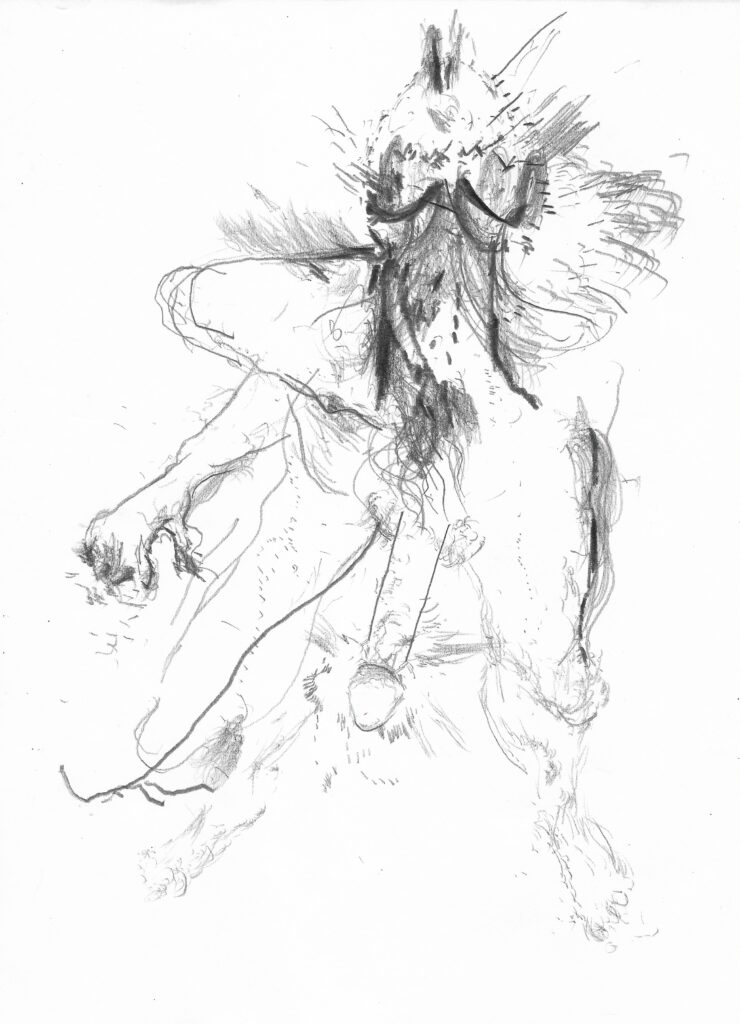
This is a quotation: “The body is the synapse between the personal and the social?” l like that statement. I can imagine personal and social as two dimensions, one being the prolongation of the other in commutative order. I know I’m going to use another term that turns you off. What about a spiritual dimension? How could it fit in this synapse?
I don’t believe in that dimension. I have a really strong feeling of knowing that it doesn’t exist inside me so I never think about it. At least not in any metaphysical or supernatural or religious sense. We are nature and our connections are natural. We don’t need anything extra for us to connect with the universe. I mean the wondrous beauty of life and all of the marvelous miraculous feelings that we experience of truly being alive can all take place in the physical dimension. We owe it to ourselves and to others to stay physical I think. Especially nowadays, because if the natural environment changes faster than our ability to adapt to it what will we do? Commune with the pollution? Be one with the trash and the sewage? Bond with debris? Enjoy a great sense of togetherness with crumbling buildings and the cities half collapsed into the seas? It’s something I think about often.
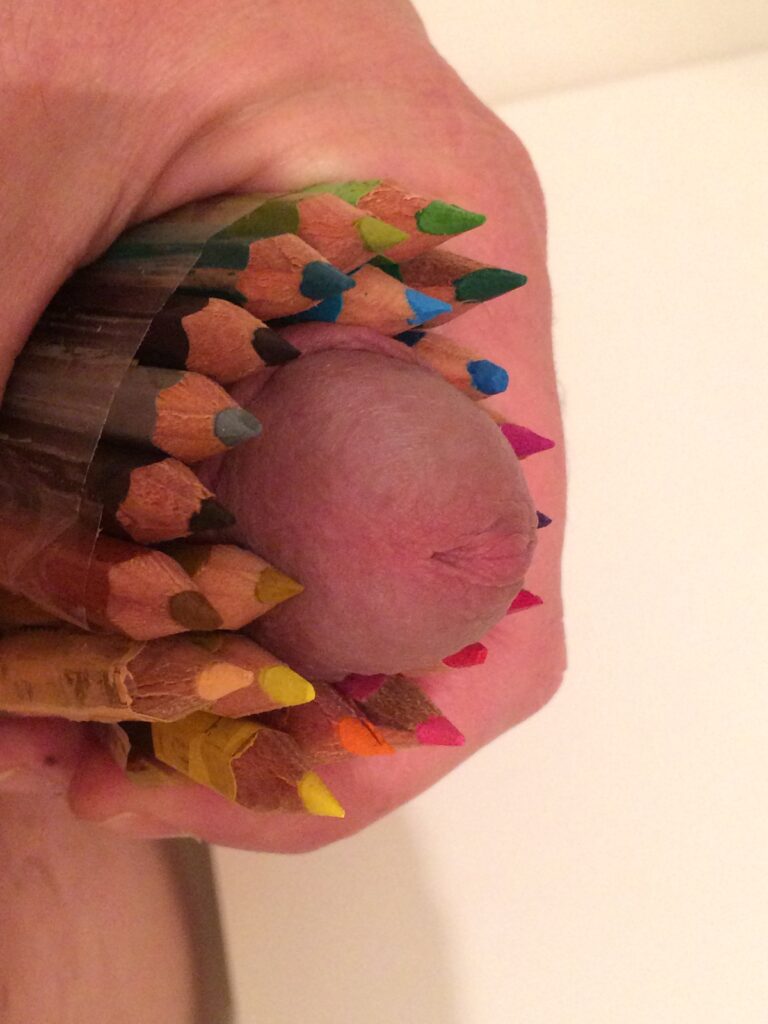
Could you say a couple of words about Action-Onanism: Actionanism? Would you recommend it as an artistic creative tool?
The word Actionanism was the final climactic thought at the height of a conceptual freestyle event. While I was making the paroxysms series, where I wore a watercolor-pencil sheath around my cock and fucked the pictures into being, I was journaling and trying to make sense of what I was doing and wrote the following:
“Drawing as sex act.
To make the act of drawing sexually gratifying.
I fuck my pencils on the paper.
When it hurts, I adjust.
When it feels good, I speed up.
Each stroke is a pelvic thrust.
Abstract art is masturbation.
Abstract-hedonism, a work where every formal decision, every aesthetic choice, is the direct result of either painful or pleasurable sensations.
To reduce mark making to a purely physical response in order to achieve pleasure and avoid pain.
Abstract-Hedonism. Ab-Hed. Abstract-Onanism. Ab-On. Action-Onanism.
Actionanism.”
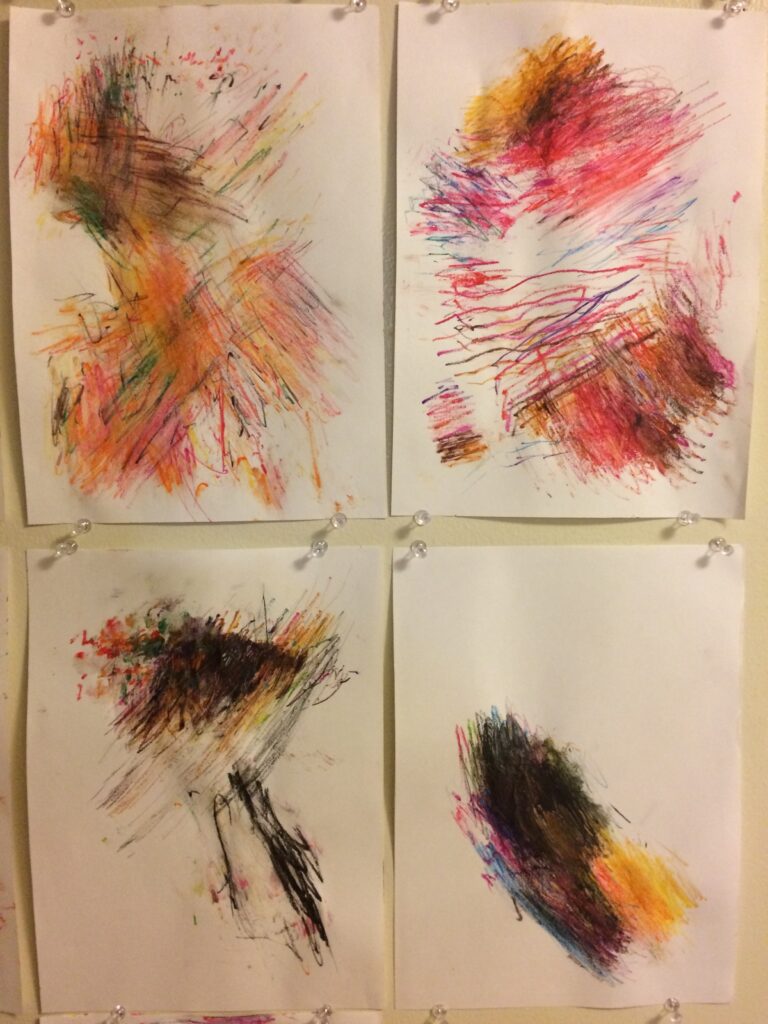
I never went any further than that conceptually. I never expounded upon it until now but I guess I would just say that like action painting, actionanism would also be more about the process than the finished result and yet a different way to think about the physical act of mark making. And that when it comes to defining the boundaries of the spectrum of feelings (from pain to pleasure) I don’t think it can get any more stimulating or basic than that. I’d definitely recommend it if someone could add or contribute to the process that would be great!
Your work Self-Portrait on Viagra (pencil on paper, 22″ X 30″) has a similar, if not identical style to Erection Study (pencil on paper, 18″ X 24″). As far as I can see, both works clearly differ stylistically from the others in chapters: Paroxysms, Face Traces, Daily-Self-Portraits and Sensory Transmissions. Was the Erection Study also done under the influence of Viagra? In that case, will it be logical to conclude that Viagra´s arousal effect led, in some way, to that specific drawing style? Or was it an intuitive, more or less conscious choice of style depending on mood – and not definitely on Viagra?
No. I only did one picture on Viagra. The style of both the Erection Study and Viagra pictures are what I would call naturalism I guess. That’s the way I normally draw myself without any ulterior conceptual intentions or expectations with limited focus on a single aspect of the experience. But when I draw naturalistically I almost always incorporate somatosensory information, physical bodily sensations, into the image too wherever and whenever I feel them inside my body as they occur and grab my attention. How prominently those feelings appear visually is directly correlated with the intensity that they are felt.
If only one of those similar pictures was done on Viagra, can I conclude then… that the influence of Viagra was not decisive for the artistic outcome?
No it was. Every artistic outcome is decisive and the result of decisions, but the decisions I had to make were concerned chiefly with the object of my attention and the innate urge to keep perceiving my cock getting bigger and bigger and not having enough room on the paper to represent it no matter how big the paper was to begin with. The overlapping and transparency and motion, and the physical sensation of having my prostrate held to the ground by an imagined incredibly strong gravitational force influenced my body position too. So even though it may look like a similar style with less deviation in the artistic decision process there are important differences. I call it naturalism because I channeled what was occurring naturally but sometimes during a drawing experience what happens naturally appears much more abstract.
1- Huffing Lighter Fluid, 2- Huffing Gas, 3- Nitrous Oxide (b), 4- Carbon Monoxide Inhalation, 5- Sodium thiopental, Steroids, Albuterol, & Saline, 6- Computer Duster
Has any drug had such a strong and decisive influence that you could not do anything similar without it?
I would say the most unique and dissimilar ones would be; DMT, Geodon, Heroin, Lithium, Marijuana Resin, Mushrooms, Nicotine Gum, Novocaine, Opium, PCP, and Risperdal, and each of the inhalants have had their own unique attributes too. There are a lot of different reasons that can contribute to the uniqueness of an image though. I could have experienced a once in a lifetime event like when Risperidal gave me risperidone-induced priapism. Or maybe I engaged in a once in a lifetime behavior like when Geodon made me unable to stop myself from walking and spontaneously turning into the walls really hard. Or perhaps I had a once in a lifetime perception like when I took DMT and was transported to a geometry world with severely impaired motor skills. There are a lot of possible reasons for the unique appearances but now that I have had those experiences, perceptions, behaviors, perspectives, etc. it becomes entirely possible for me to do something similar without the drugs because a meaning has been made, or a perception has been attended to, or a pattern has been formed. But, I consciously choose to not do that though and not visually repeat the appearances of experiences in their absence because to me it would be false, an illustration and with no the feelings, and it would corrupt the next experience unless I’m dealing with an analogy where that would be completely appropriate. Much of the time I try to draw naturally and incorporate what occurs as it occurs, incorporate what happens to my nervous system and sensory systems and body into the drawings while I’m drawing them and I believe that is what’s most responsible for how they look afterward. That could be entirely magical thinking though. I don’t know.
I guess these questions are valid for all drugs that can influence artistic creation – not only Viagra. But the interesting thing here is that Viagra is not considered as usable in artistic creation.
To me every drug or actually every single thing on Earth and every single possible behavior we can do that can change one’s condition or enable us to perceive a difference is usable for artistic creation. Salt, heart medicine, holding your breath, spinning until you’re dizzy, anything at all. Every bit of it is considered usable to me.
I feel that I am reading of an extraordinary artistic sensibility, which could partly explain your incredible variety of styles. Do you think this sensibility is a correlation to, or an expression of, some kind of general vulnerability to the world?
No, I think it is much much more about our adaptability to the world and the many ways we’ve developed to make adapting to the world much more easy and efficient.
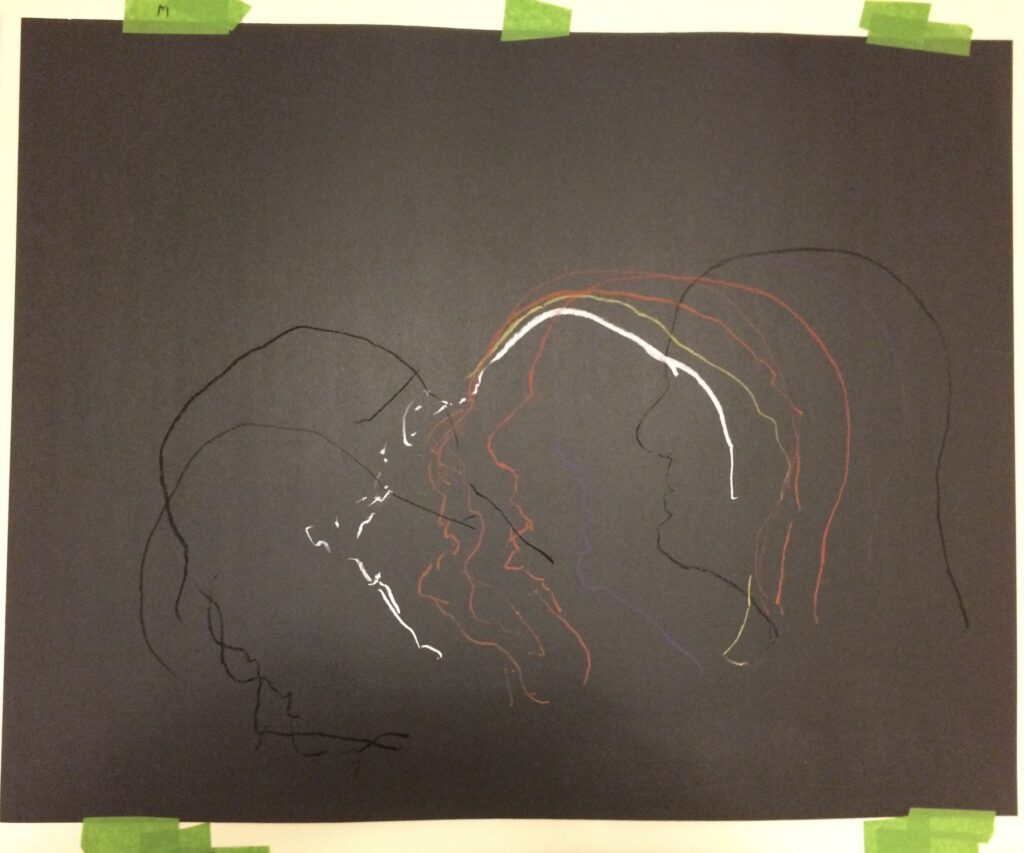
From your own artistic point of view: Do you find the results of the Sexual Arousal trip satisfactory?
Definitely. I love how the sexual arousal experiments turned out. Each experiment and subsequent reflection upon it led to another experiment all feeding off of each other. It was an extremely stimulating month, mentally. Sometimes I think about devoting an entire year to the exploration of sexual arousal because it is so incredibly powerful. If only I was 20 years old when I had these thoughts. At age 50, two orgasms a day for 30 days straight was my limit. I remember at the time feeling slightly constrained but not quite frustrated that my body couldn’t make more art physiologically.
There was a time when experimenting with psychedelic drugs was illegal and, for a vast majority, also a moral offense. After the wild sixties artists using drugs became accepted into the mainstream but what about sex? We don’t know of many artists methodically using intense sex to boost their artistic explorations and production… why is that?
I don’t know, but it’s not just sex that it’s like that with either. With the exception of our optical vision it’s the same with almost every one of our basic elements of experience as well as the individual components that make up the elements and all of our drives and motivations and even other things of major importance to us too, like electricity for example. Over the last century and a half we’ve seen artists using electricity to make their art but not a single one that I know of has ever made their art about the power of electricity and addressed how electricity has shaped humanity. No discussion, no reflection, no identification, evaluation or judgments, no meanings… We have yet to see artists really taking on electricity at all and exploring and experimenting with it as a subject matter, and as content and as a wellspring of new forms. At best, electricity has become a medium or the thing that powers the medium for some but this isn’t a new problem. The cave artists were able to paint in the farthest dark parts of the caves because of fire control, pigment and candle technology but we don’t have any cave paintings about fire, pigment and candles. We don’t see evidence of them reflecting on the impact that it was having on their lives. Not until ancient Egypt do we see this type of reflection and consciousness in the arts I think. We don’t often move forward and when we do it is often in aimless clumsy directions. And we have a history of always using the latest new tools to make art about the same old kinds of things; society and culture and economics and relationships and feelings and memories and dreams and nature and religion and politics and historical events… but it’s actually the tools we create and how we use those tools to shape our experiences and our environments and our relationships with others that are responsible for all of those changes in culture and society and economics and politics and everything. Seldom if ever do we make art with and about the tools themselves and their impacts, our major influences. And it’s precisely the flipping back on things, the reflection time, that’s needed to allow for learning to take place and to enable a catalyst for meaning creation to come about and generate the resulting great expansions in the humanities and creativity via purposeful direction. The ability to respond to the response is the essence of what human consciousness is too I think. Meanings generated in the process of becoming aware. The ability to do that is one of the things that make us human. There is more to the human experience than our eyes and the changing looks of objects.
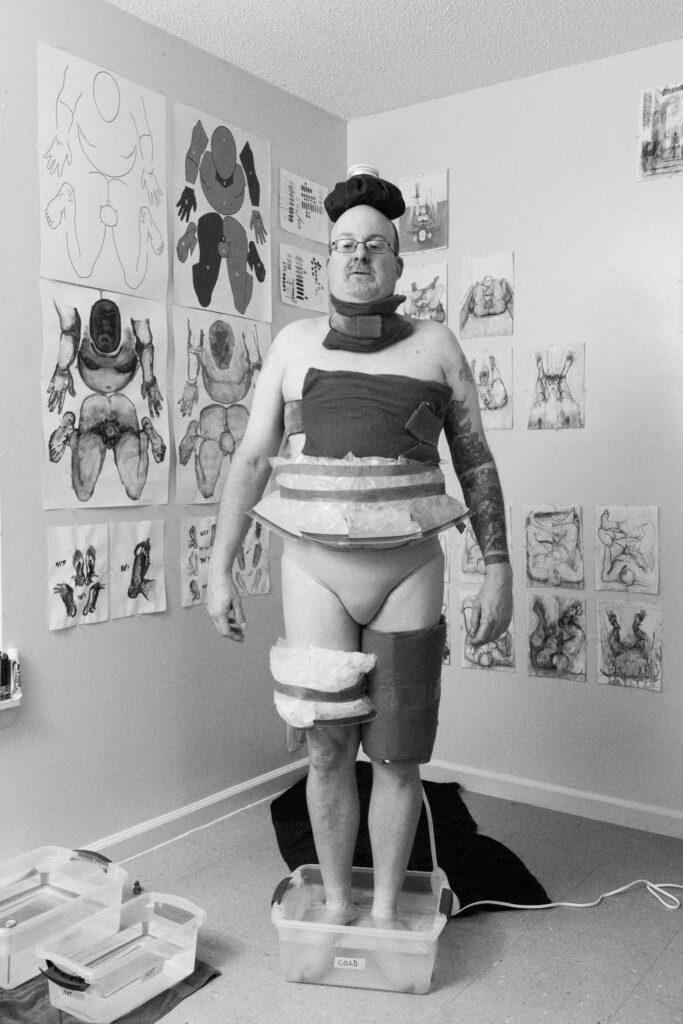
It’s painfully overwhelming to think about what’s been left out of art besides sex. Things like breathing, our senses and deprivation of senses, kinesthesia, diet and hunger, the loss and regaining and varying levels of consciousness and sleep, arousal and oh my god all of the “-ceptions” that have been neglected in the arts! Like proprioception, nociception, eqilibrioception, thermocreception, chemo- electro-, magneto-… There are so many of these epic, I mean truly massive and wondrous, fields of study still totally unchartered in the arts. Occasionally you might see a title of an exhibition about one of these things but then the work will be very visual and superficial and have nothing deeper to say about any of it. It can overwhelm me to the point of paralysis just thinking about this. I just have to make lists of this stuff and move on. If I don’t do that, I feel like I’m drowning or being crushed beneath the weight of unmaterialized possibilities and I still feel like that much of the time anyway.
There have been some shifts that came about that give me reason to hope though. French impressionism was a paradigm shift in the experience of natural light changing over time. Surrealism was a paradigm shift from the conscious to the unconscious. Conceptual art was a paradigm shift from the eyes to the brain. And action painting was a paradigm shift from the product to the process. There are a few others too. So there is reason to hope, but as I get older the hopes get buried under the vast amount of possibilities I perceive never happening.
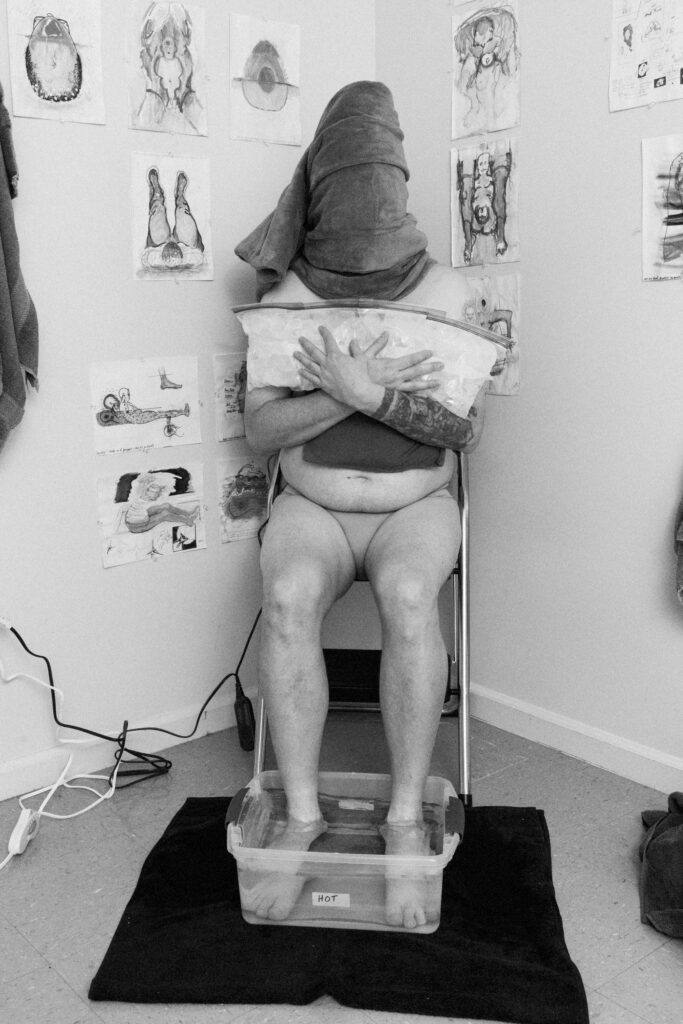
What about from a personal-psychological perspective? In other words: What did the intense personal-psychological efforts give back?
Excessive and incessant stimulation. Also, a fundamental knowledge about the different stages of sexual arousal. General educational type of things about the human body that I didn’t know about before I started. Like the refractory period after orgasm. I still have yet to fully embrace the power of it. The sexual arousal month also taught me for the first time how to use color “scientifically” and objectively as opposed to choosing colors naturalistically or intuitively or subjectively.
Do you consider that the trip ended as something social, bigger than you? Or is it something the “spectators” should decide?
Like much of my art there hasn’t been an audience for it yet. I continue to do it for myself and haven’t been afforded many institutional opportunities to really share it with others outside of an occasional post on Instagram. And my art is always bigger than me because of the subjects I embrace. I always try to pick subjects that address one of the more neglected fundamental properties of all of us. I wouldn’t choose them if they didn’t. Before I even begin a sensory drawing experiment month I have to have an incredibly strong feeling of knowing beforehand that the subject matter I’ve selected will be tapping directly into the heart of that inner connectedness to being human. If I don’t have that, then what’s the point? It would be a total waste of time for me.
For more info about Bryan Lewis Saunders, check out his Instagram and website.








